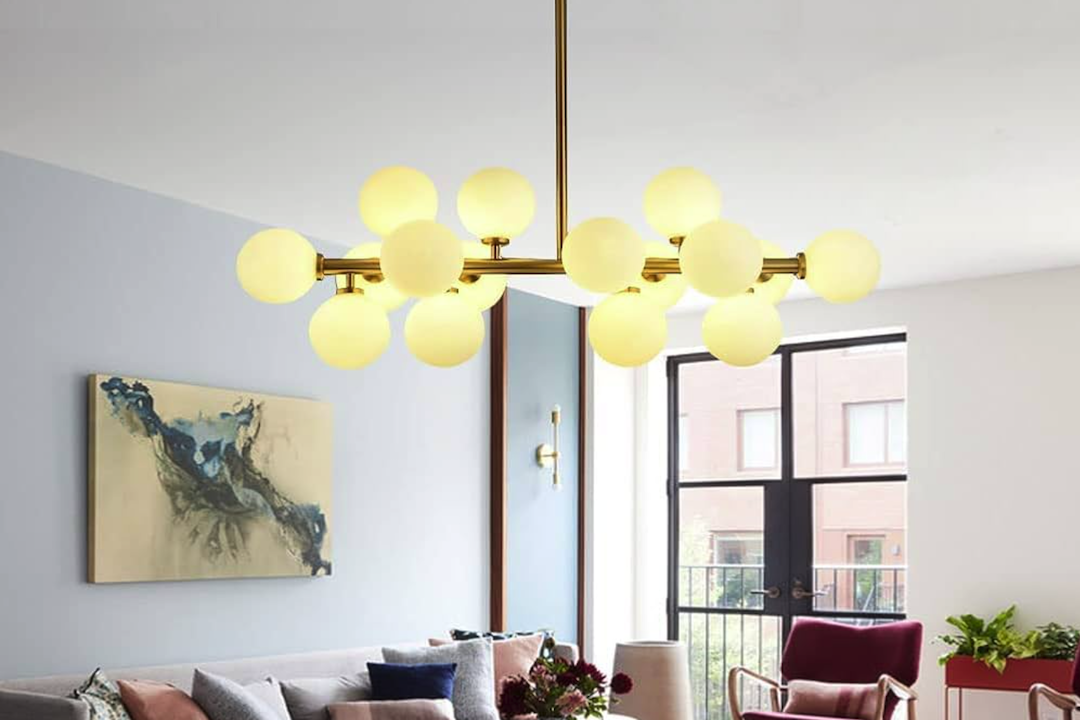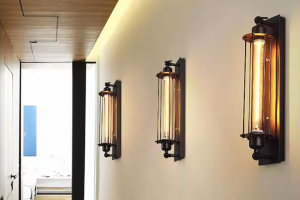
German Minimalist Chandelier: The Perfect Balance of Elegance and Simplicity
The German minimalist chandelier represents a harmonious blend of form and function, embodying the principles of minimalism that have gained prominence in contemporary design. Characterized by clean lines, understated elegance, and a focus on essential elements, these chandeliers serve as both functional lighting fixtures and artistic statements. The allure of the German minimalist chandelier lies not only in its aesthetic appeal but also in its ability to transform spaces, creating an atmosphere that is both serene and sophisticated.
As we delve deeper into the world of German minimalist chandeliers Litlightings, we will explore their historical roots, distinctive features, and the ways in which they can enhance various interior environments. Minimalism, as a design philosophy, advocates for simplicity and the elimination of excess. In the context of lighting design, this translates into fixtures that prioritize clarity and purpose over ornate embellishments.
The German minimalist chandelier exemplifies this ethos, offering a striking visual presence without overwhelming the senses. By focusing on the essential qualities of light and space, these chandeliers invite a sense of tranquility and balance into any room. This article will examine the evolution of minimalism in German design, the unique characteristics of these chandeliers, and practical tips for incorporating them into diverse interior styles.
The History of Minimalism in German Design
The roots of minimalism in German design can be traced back to the Bauhaus movement, which emerged in the early 20th century. Founded by Walter Gropius in 1919, the Bauhaus school sought to unify art and technology, emphasizing functional design that was accessible to all. This movement laid the groundwork for modernist principles that would later influence various design disciplines, including architecture, furniture, and lighting.
The Bauhaus ethos championed simplicity, geometric forms, and a focus on materials, all of which are hallmarks of German minimalist design. As the years progressed, minimalism evolved into a broader cultural movement that transcended the Bauhaus legacy. In the post-World War II era, designers began to embrace a more stripped-down aesthetic as a response to the excesses of previous styles.
This shift was particularly evident in Germany, where designers sought to create objects that were not only visually appealing but also practical and sustainable. The minimalist approach became synonymous with high-quality craftsmanship and innovative use of materials, leading to the emergence of iconic pieces that continue to influence contemporary design.
The Features of German Minimalist Chandelier
German minimalist chandeliers are distinguished by their sleek silhouettes and thoughtful design elements. One of the most notable features is their use of geometric shapes, which often include circles, squares, and linear forms. These shapes create a sense of order and balance, allowing the chandelier to serve as a focal point without dominating the space.
The materials used in these fixtures are typically high-quality metals such as brushed aluminum or stainless steel, which not only enhance durability but also contribute to a refined aesthetic. Another defining characteristic of German minimalist chandeliers is their emphasis on light quality. Many designs incorporate energy-efficient LED technology that provides a warm, inviting glow while minimizing energy consumption.
This focus on functionality extends to the chandelier’s size and scale; designers carefully consider how each piece will interact with its surroundings to ensure it complements rather than overwhelms the room. Additionally, many German minimalist chandeliers feature adjustable components or modular designs that allow for customization based on individual preferences and spatial requirements.
How German Minimalist Chandelier Enhances Elegance in a Space
The presence of a German minimalist chandelier can significantly elevate the elegance of a room. Its understated design allows it to blend seamlessly with various decor styles while still making a bold statement. For instance, in a modern dining area, a sleek chandelier can serve as a striking centerpiece above a simple wooden table, enhancing the overall aesthetic without detracting from other design elements.
The interplay of light and shadow created by these fixtures adds depth to the space, creating an inviting atmosphere that encourages social interaction. Moreover, the strategic placement of a German minimalist chandelier can draw attention to architectural features within a room. For example, when hung in an entryway with high ceilings, it can accentuate vertical lines and create a sense of grandeur.
In contrast, when placed in a cozy living room setting, it can provide ambient lighting that fosters warmth and intimacy. This versatility allows homeowners to use these chandeliers as tools for enhancing both functionality and visual appeal in their spaces.
The Simplicity and Functionality of German Minimalist Chandelier
Simplicity is at the core of the German minimalist chandelier’s design philosophy. By stripping away unnecessary ornamentation, these fixtures focus on delivering essential lighting solutions while maintaining an elegant appearance. This approach not only makes them visually appealing but also ensures they remain relevant across changing design trends.
The clean lines and geometric forms allow these chandeliers to fit effortlessly into various settings, from contemporary urban apartments to traditional homes. Functionality is equally important in the design of German minimalist chandeliers. Many models are designed with adjustable brightness levels or integrated dimming features that allow users to customize their lighting experience based on mood or activity.
This adaptability makes them suitable for different occasions—whether it’s hosting a dinner party or enjoying a quiet evening at home. Additionally, their energy-efficient designs contribute to sustainability efforts by reducing electricity consumption without compromising on style or performance.
Tips for Incorporating German Minimalist Chandelier into Your Home
Assessing the Scale of Your Space
Before selecting a chandelier, it’s essential to assess the scale of your space. A large chandelier can overwhelm a small room, while a petite fixture may get lost in an expansive area.
Considering Proportions and Materials
To achieve balance, consider the proportions of your furniture and architectural elements when choosing the size and style of your chandelier. The choice of materials and finishes is also crucial. Opting for a chandelier that complements existing decor can create a cohesive look throughout your home.
Enhancing the Room’s Color Palette
For instance, if your space features warm wood tones, selecting a chandelier with brass or bronze accents can enhance this warmth while maintaining a minimalist aesthetic. Additionally, consider the color palette of your room; neutral tones often work well with minimalist designs, allowing the chandelier to stand out without clashing with other elements.
The Versatility of German Minimalist Chandelier in Different Design Styles
One of the most compelling aspects of German minimalist chandeliers is their versatility across various design styles. While they are often associated with modern or contemporary interiors, their clean lines and understated elegance make them suitable for eclectic spaces as well. For example, in an industrial loft setting characterized by exposed brick and metal accents, a sleek minimalist chandelier can provide an unexpected contrast that enhances the overall aesthetic.
In more traditional settings, these chandeliers can serve as a refreshing focal point that bridges classic elements with modern sensibilities. A German minimalist chandelier can be paired with antique furniture or vintage decor to create an intriguing juxtaposition that highlights both styles’ strengths. This adaptability allows homeowners to experiment with different combinations while maintaining an air of sophistication throughout their spaces.
The Timeless Appeal of German Minimalist Chandelier
The enduring appeal of the German minimalist chandelier lies in its ability to transcend trends while remaining relevant in contemporary design discourse. By prioritizing simplicity and functionality without sacrificing elegance, these fixtures have carved out a unique niche within the world of lighting design. Their historical roots in movements like Bauhaus underscore their significance as not just decorative objects but also as embodiments of thoughtful craftsmanship and innovative thinking.
As we continue to navigate evolving design landscapes, the German minimalist chandelier stands as a testament to the power of simplicity in creating beautiful spaces. Whether used as a statement piece or as part of an integrated design scheme, these chandeliers offer an opportunity to enhance both aesthetics and functionality within any environment. Their timeless nature ensures they will remain cherished elements in homes for years to come, reflecting an appreciation for quality design that resonates across generations.


